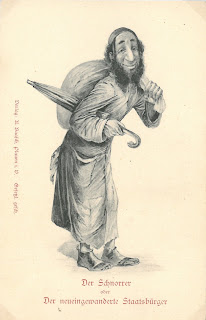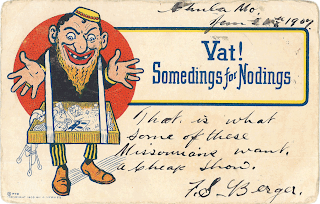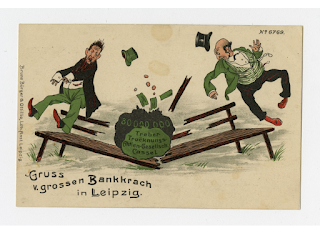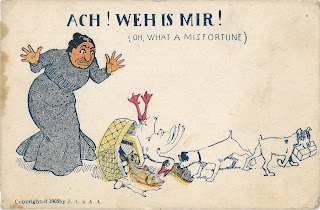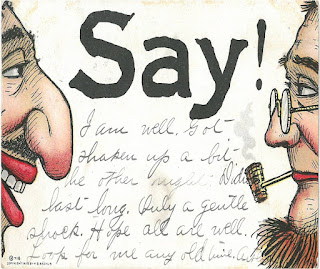Understanding Historical Prejudices: The Schnorrer Stereotype in 19th Century Germany
Meta Description: Explore the historical portrayal of a Schnorrer, a Jewish beggar stereotype, in a postcard during the late 19th century in Germany, shedding light on prevalent biases and anti-Semitic sentiments of the time.
Content
In the late 19th century, a troubling stereotype known as the Schnorrer, depicting a Jewish beggar, was widespread and perpetuated and also found its way into this antisemitic postcard.
The postcard vividly illustrates a stereotypical representation of a destitute Jewish man. The accompanying German caption reads: "Der Schorrer oder der neueingewanderte Staatsbürger" ("The Moocher, or the newly immigrated citizen"). In Yiddish, a Schnorrer refers to someone who seeks financial assistance.
This postcard reflects the condemnation of the acceptance of Jewish immigrants into Germany during that era. The prevailing "defensive policy" in Prussia at the time held strong anti-Semitic undertones, aligning with pre-existing biases among the populace. These biases depicted Jewish immigrants as unclean, beggars, or dishonest individuals from the East, further fueling the wave of anti-Semitism that argued against the inclusion of Jews within the German nation.
Deltiology
Artist:Publisher: U. Baasch, Plauen, Germany
Printer:
Date: Circa 1900
#postcards #stereotype #Jewishbehavior #beggar

